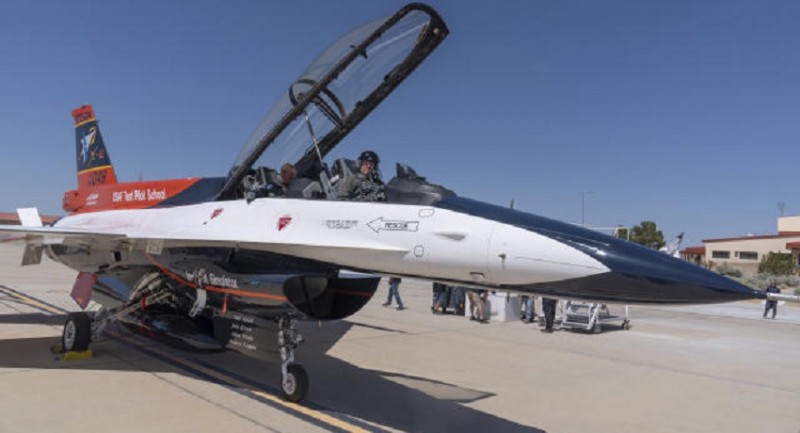
In a groundbreaking achievement for military aviation, an experimental F-16 fighter jet, painted in striking orange and white, recently soared through the skies under the exclusive control of artificial intelligence (AI). This milestone was marked by a successful test flight with Air Force Secretary Frank Kendall onboard, signaling a new era in aerial warfare akin to the advent of stealth technology. The U.S. Air Force is aggressively advancing its integration of AI, with plans to deploy more than 1,000 unmanned warplanes by 2028.
Impact of AI on Military Aviation:
The momentous test flight unfolded at Edwards Air Force Base, renowned for its pioneering contributions to aerospace technology and clandestine research. Following the flight, Secretary Kendall stressed to The Associated Press (AP) the pivotal role of AI in bolstering national security. He emphasized, "Not having it poses a security risk. We absolutely need it," underlining the indispensable nature of AI integration in modern warfare strategies.
Addressing Concerns and Ensuring Oversight:
While AI's strides in technology are promising, apprehensions linger over its potential for autonomous decision-making, particularly in wielding lethal force sans sufficient human supervision. Advocates for arms control and humanitarian organizations advocate for stringent regulations to govern AI's involvement in military activities. Secretary Kendall reassured that human oversight would remain paramount in decisions concerning weapon deployment, stressing the significance of ethical and accountable AI integration.
Strategic Shift and Operational Benefits:
The military's pivot toward AI-driven aircraft stems from various factors, including heightened security, cost-effectiveness, and tactical superiority. Manned fighter jets face escalating susceptibility due to advancements in electronic warfare, necessitating a transition toward AI-controlled drones. Moreover, setbacks in the production and expenses of the F-35 Joint Strike Fighter have accelerated the adoption of smaller, more economical AI-guided unmanned jets.
Progress and Future Outlook:
Dubbed Vista, the AI-piloted F-16 has exhibited remarkable advancements, outperforming human pilots in certain scenarios. The success of this program underscores AI's potential in reshaping aerial combat strategies. While the transition sparks inquiries into the future roles of human pilots, experts stress the importance of maintaining technological supremacy in AI to effectively counter potential adversaries.
The triumphant test flight of the AI-driven F-16 signifies a significant stride forward in military aviation technology. As AI continues its evolution, its integration into military endeavors is poised to redefine the landscape of aerial warfare, emphasizing the necessity for responsible and ethical AI development and application.
Indian Air Force Receives Second C295 Aircraft